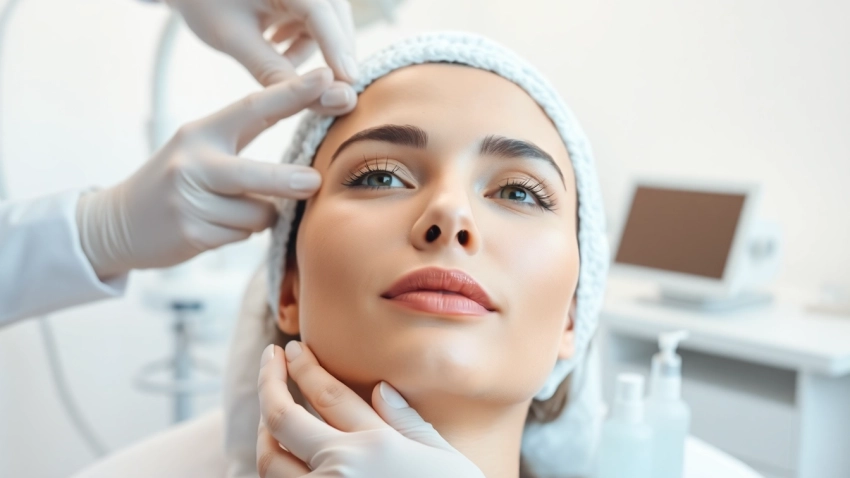
Achieving Harmony and Beauty Through Facial Balancing Techniques
Understanding Facial Balancing
What is Facial Balancing?
Facial balancing is a non-invasive aesthetic treatment aiming to enhance the harmony and proportions of an individual’s facial features. It involves adjusting different areas of the face to achieve a more symmetrical and aesthetically pleasing appearance. Facial balancing can encompass various procedures tailored to specific needs, including dermal fillers, Botox injections, and contouring techniques. The goal is to create a cohesive look that complements an individual’s unique features, resulting in a more refined and attractive face. This treatment is not merely about improving appearance; it can have a profound impact on an individual’s self-esteem and confidence.facial balancing is designed to address perceived asymmetries, ensuring that the face reflects an ideal balance as defined by aesthetic principles.
The Importance of Facial Proportions
Facial proportions are crucial in determining what is considered beautiful or aesthetically pleasing. The concept of facial proportions is deeply rooted in art and aesthetics, dating back to ancient civilizations that celebrated symmetry. Research has shown that symmetrical faces are often perceived as more attractive. This perception can be attributed to innate human preferences and the psychological effects of balance and harmony. Achieving facial balance is not about conforming to arbitrary standards but rather enhancing one’s unique characteristics while striving for an overall proportionality. For instance, the classic “golden ratio,” which suggests that certain proportions yield beauty, often guides aesthetic treatments. However, it is essential to personalize the approach, ensuring that the end result reflects an individual’s distinctive identity.
Common Misconceptions About Facial Balancing
As facial balancing gains popularity, several misconceptions may arise, leading to misunderstandings about its purpose and outcomes. One common myth is that facial balancing seeks to create a “perfect” face. In reality, the objective is to enhance natural attractiveness by making subtle adjustments rather than altering fundamental features. Another misconception is that facial balancing is only suitable for younger individuals. In fact, people of all ages can benefit from these treatments, as they can improve facial volume, reduce signs of aging, and restore youthful contours. Additionally, some individuals may believe that a single treatment can achieve complete facial balance. However, achieving optimal results often requires a comprehensive assessment and potentially multiple treatments or techniques tailored to address specific concerns.
Benefits of Facial Balancing
Enhanced Aesthetic Appearance
One of the most significant benefits of facial balancing is improved aesthetic appearance. By enhancing the symmetry and proportions of the face, individuals can achieve a more harmonious look that aligns with their facial features. This improvement can elevate overall confidence and self-perception, leading individuals to embrace their societal interactions and appearances with more positivity. Whether it is through subtle changes or more pronounced adjustments, facial balancing plays a pivotal role in enhancing one’s beauty without losing personal identity. As aesthetic standards evolve, the customizability of facial balancing ensures that individuals can achieve a look that reflects their uniqueness.
Boosted Self-Confidence
The psychological impact of cosmetic procedures is profound. Enhancing physical appearance through facial balancing often leads to boosted self-esteem and confidence. Many individuals report feeling more comfortable in social situations and more willing to engage with others when they feel good about their appearance. Self-confidence can have a cascading effect on various aspects of life, including personal relationships, professional opportunities, and overall quality of life. As individuals notice improvements in their facial contours and proportions, the positive psychological outcomes become increasingly evident, fostering a sense of empowerment and assurance.
Long-Term Effects on Youthfulness
Facial balancing treatments often yield long-term effects, contributing to a more youthful appearance. Many procedures target specific areas where volume loss or sagging occurs due to aging. By strategically restoring volume and enhancing contours, individuals can maintain a youthful look that defies the aging process. These treatments can slow down the visual aspects of aging, allowing individuals to enjoy their youthful looks for extended periods. Furthermore, when performed by qualified practitioners, these interventions can ensure a natural appearance, avoiding the overly “done” look often associated with more aggressive cosmetic enhancements.
Facial Balancing Techniques
Injectables: Fillers and Botox
Injectables, including dermal fillers and Botox, are among the most popular techniques for achieving facial balancing. Dermal fillers are used to restore volume, plump up areas of the face, and enhance contours, most commonly in the cheeks, lips, and under-eye area. These fillers can improve proportions by adding definition in key areas, resulting in a more youthful and vibrant look. On the other hand, Botox is a neuromodulator used to relax facial muscles, smoothing out wrinkles and fine lines, particularly in areas like the forehead and around the eyes. The combination of both treatments can provide a comprehensive approach to facial balancing, addressing both volume loss and wrinkles to restore youthfulness and symmetry.
Surgical Options for Permanent Change
For individuals looking for permanent facial changes, surgical options such as rhinoplasty, facelifts, and chin augmentations may be suitable. Rhinoplasty can reshape the nose to better align with facial proportions, while a facelift can tighten sagging skin and restore youthful contours. Chin augmentation can enhance jawline definition, providing a more balanced overall facial structure. These surgical interventions can offer long-lasting results and dramatic changes, making them appropriate for those seeking significant alterations in their appearance. However, the decision to pursue surgical options should involve thorough consultations and consideration of personal goals, risks, and recovery timelines.
Non-Surgical Treatments: Skin Care and Laser Therapy
Non-surgical treatments such as advanced skin care regimens and laser therapy also play a significant role in facial balancing. High-quality skincare can improve skin texture and tone, serve as a preventive measure against aging, and complement any facial procedures. Laser therapy, which can include fractional laser treatments and laser resurfacing, helps eradicate uneven pigmentation, acne scars, and fine lines, thereby enhancing overall skin quality. These non-invasive options are advantageous for those who desire subtle refinements without the downtime associated with injectables or surgical procedures. As part of a comprehensive facial balancing strategy, they can significantly enhance the overall outcome.
Choosing the Right Practitioner for Facial Balancing
Qualifications and Experience to Look For
Choosing the right practitioner is crucial for achieving desired facial balancing results. Individuals should seek qualified professionals with extensive training in aesthetic medicine. Look for board-certified dermatologists, plastic surgeons, or licensed aestheticians who specialize in facial treatments. It’s essential to verify their credentials, understand their experience with facial balancing procedures, and view their portfolios of past work to gauge their capability. Additionally, consider practitioners who are well-versed in the latest techniques and technologies within the industry, ensuring that they can provide the most effective and safe treatments based on individual needs.
Consultation: What to Expect
A thorough consultation is a pivotal stage in the facial balancing process. During this consultation, practitioners will assess your facial features, discuss your aesthetic goals, and recommend tailored treatment options. Expect to be asked about your medical history, previous cosmetic procedures, and any specific concerns you may have. A reputable practitioner will communicate openly about the procedures, potential risks, and expected outcomes, allowing you to make informed decisions. Providing clear expectations and understanding the timeline for results and recovery will also be integral to this phase, ensuring alignment between practitioner and patient.
Results and Recovery: The Follow-Up Process
Once you have undergone facial balancing procedures, understanding the expected results and recovery process is essential. Most injectables will offer immediate results, while surgical treatments may require time to heal and reveal the final outcome. Follow-up appointments are typically necessary to monitor healing, evaluate results, and make any necessary adjustments to the treatment plan. Practitioners will provide aftercare instructions, including tips for managing swelling or discomfort and recommendations for skin care. It’s crucial to adhere to these guidelines for optimal results and to address any concerns that may arise during the recovery process.
FAQ About Facial Balancing
How Safe is Facial Balancing?
Facial balancing is generally regarded as safe, especially when performed by qualified practitioners. The majority of nonsurgical procedures, such as injectables, have minimal risks and complications when executed correctly. However, like any medical procedure, there are inherent risks. It is vital for individuals to discuss these risks during consultations and perform their due diligence in choosing experienced professionals. Patients should also disclose their medical history and any medications they are taking, ensuring a comprehensive understanding of their health status before undergoing treatment.
What is the Cost of Facial Balancing?
The cost of facial balancing treatments can vary significantly depending on the procedures chosen, geographical location, and practitioner expertise. Non-surgical treatments such as injectables may range from moderate to higher prices based on the amount required and the treatment area. Surgical options typically require more substantial financial investment, considering the associated costs for surgery, anesthesia, and post-operative care. Consultation with practitioners will provide a clearer picture of the total expenses involved, allowing individuals to prepare accordingly.
Can Facial Balancing be Reversed?
In many cases, facial balancing treatments can be reversed or adjusted if necessary. For instance, certain injectables can be dissolved using specific agents, allowing individuals to revert to their previous appearance if they dislike the results. However, surgical changes are more permanent, and reversing such procedures may involve additional surgeries. It is crucial for individuals to communicate openly with their practitioners about their concerns and desired outcomes, enabling them to create tailored plans that accommodate potential changes.












Leave a Reply